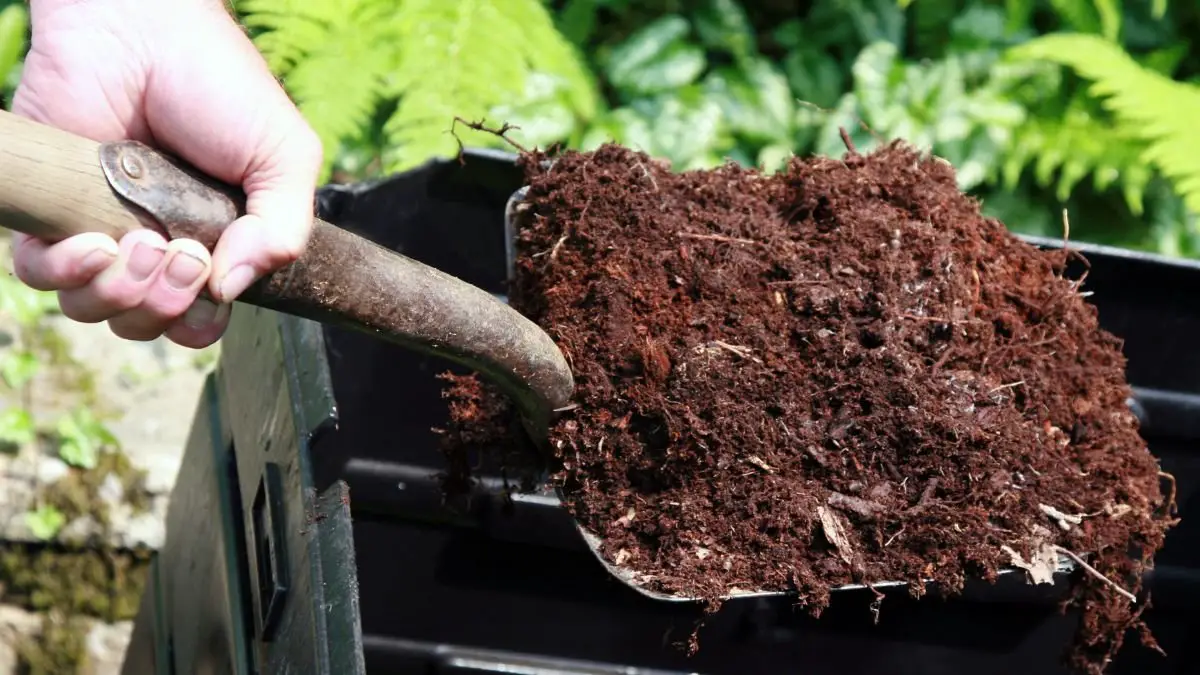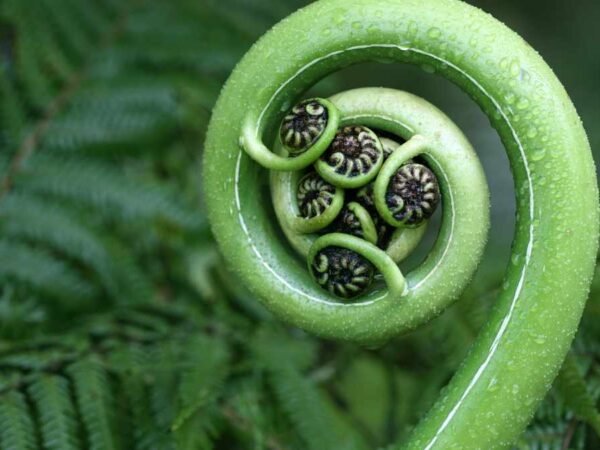
Fertilizing ferns can seem daunting, but with the right guidance, it's simpler than you think. In this comprehensive guide, we'll walk you through the process step by step, ensuring your ferns thrive and flourish.
Ferns benefit from a balanced fertilizer with equal parts nitrogen, phosphorus, and potassium. Apply a water-soluble fertilizer diluted to half strength every two to four weeks during the growing season, typically spring through fall. Avoid over-fertilizing, as it can lead to burned fronds or stunted growth. Remember to water the fern thoroughly after fertilizing to prevent salt buildup in the soil. Additionally, consider supplementing with organic matter like compost or aged manure to provide essential nutrients and improve soil structure.
As you delve deeper into fern care, explore different types of fertilizers, such as slow-release granules or liquid formulations, to find what works best for your specific fern variety. Experiment with alternative organic fertilizers like fish emulsion or seaweed extract to enrich the soil naturally. Stay tuned for more expert tips on fern care, including propagation techniques and troubleshooting common issues, to ensure your ferns thrive in any environment.
Key Takeaways
- Understand the specific needs of ferns for proper care and growth.
- Choose a fertilizer rich in nitrogen to support fern health and vibrancy.
- Fertilize ferns during their active growing season for best results.
- Apply fertilizer evenly around the root zone of the fern, avoiding direct contact with the plant.
- Water ferns after fertilizing to help nutrients penetrate the soil effectively.
- Use a balanced liquid fertilizer diluted to half strength every 4-6 weeks during the growing season for optimal results.
Understanding Ferns
Growth Habits
Ferns exhibit unique growth habits that demand specific care methods. Understanding these habits is crucial for successful fertilization, ensuring optimal growth and health. By comprehending how ferns grow, you can tailor the fertilization process effectively.
Varieties
Different fern varieties display varying fertilizer needs, influenced by their individual characteristics. Identifying the specific variety of fern you have is essential for effective fertilization, ensuring the right nutrients are provided. Each type of fern requires a tailored approach to fertilization.
Soil Preferences
Ferns thrive in particular soil conditions that significantly impact their growth and health. Knowing the soil preferences of ferns is crucial for providing them with the necessary nutrients to flourish. Understanding the ideal soil type enables you to maintain your fern's well-being effectively.
Importance of Fertilization
Growth Benefits
Proper fertilization contributes to ferns' growth and health, ensuring they thrive effectively. Ferns benefit greatly from correct fertilization techniques, maximizing their growth potential. By applying appropriate fertilizers, you can significantly boost the growth benefits of your ferns.
Vibrancy Enhancement
Fertilization is key in enhancing the vibrancy of ferns, making them visually appealing and healthy. With the right fertilization methods, achieving vibrant ferns with lush foliage is entirely feasible. Enhancing the vibrancy of your ferns through proper fertilization practices will result in stunning and vibrant plants.
Choosing the Right Fertilizer
Organic Options
Organic fertilizers are derived from natural sources like compost, manure, or seaweed, providing ferns with a sustainable and eco-friendly nutrient boost. These options ensure that your ferns receive nourishment without harsh chemicals. By opting for organic fertilizers, you support healthier growth in ferns while minimizing environmental impact.
On the flip side, synthetic fertilizers are chemically formulated to deliver nutrients quickly and precisely to ferns. They offer targeted nourishment, allowing you to control the specific nutrients your ferns receive. Incorporating synthetic types can be beneficial when addressing particular fertilization needs or deficiencies in your ferns' soil composition.
Optimal Fertilization Timing
Seasonal Guide
Fertilization requirements for ferns fluctuate with the changing seasons, demanding adjustments in feeding frequency. A seasonal guide acts as a roadmap, ensuring that fertilization practices align with the plant's needs. By following this guide, fern enthusiasts can enhance their plants' health and growth potential.
Ferns exhibit various growth phases throughout the year, each influencing the timing of fertilization. Recognizing these phases is crucial in determining when to provide nutrients to the plants. Adapting the fertilization schedule based on growth stages allows ferns to absorb essential elements effectively, promoting robust and healthy development.
Applying Fern Fertilizer
Preparation Steps
Proper preparation steps are crucial before fertilizing ferns. Begin by selecting a high-quality fertilizer specifically formulated for ferns. Ensure the fertilizer is rich in essential nutrients like nitrogen, phosphorus, and potassium.
Following specific preparation steps is key to successful fertilization. Start by watering the fern thoroughly a day before fertilizing to prevent root burn. Then, carefully read the fertilizer instructions to determine the correct dosage.
Implementing necessary preparation guarantees effective nutrient uptake by ferns. Avoid over-fertilizing, as it can harm the delicate fern roots. Choose a well-draining potting mix to promote healthy growth and prevent waterlogging.
Application Techniques
Applying fertilizers using correct techniques is vital for optimal fern health. Begin by diluting the fertilizer to half strength to avoid shocking the fern's roots with excessive nutrients at once.
Utilize appropriate application techniques to prevent over or under-fertilization of ferns. Apply the diluted fertilizer directly to the soil around the base of the fern, avoiding contact with the leaves to prevent burns.
Mastering the right application techniques enhances fertilization effectiveness. Consider using a liquid fertilizer for quicker absorption or slow-release pellets for long-term nourishment. Remember to fertilize during the growing season for best results.
Fertilizing Tips and Techniques
Dosage Accuracy
Ensuring dosage accuracy is crucial when fertilizing ferns. Precise measurements prevent nutrient imbalances, promoting healthy growth. Measuring the correct dosage ensures optimal nutrient provision for ferns.
Adjusting fertilization frequency is essential to cater to the changing needs of ferns. Adapting the frequency based on growth stages supports healthy development. Making these adjustments optimizes nutrient absorption and utilization by ferns.
Essential Fertilizing Tools
Sprayers
Using sprayers for fertilizer application ensures even distribution on ferns. Sprayers offer efficient and uniform coverage of fertilizers on fern foliage. Selecting the right sprayer type enhances the effectiveness of fertilization.
Spreaders
Spreaders aid in evenly dispersing fertilizers around ferns. Utilizing spreaders ensures consistent nutrient distribution in the soil. Choosing the appropriate spreader enhances the efficiency of fertilization.
Cautions in Fertilization
Over-Fertilization Risks
- Over-fertilization harms ferns by causing nutrient toxicity, stunting growth, and impacting overall health.
- Recognizing the signs of over-fertilization is crucial to prevent irreversible damage to ferns.
- Preventive measures, such as using the right amount of fertilizer, ensure optimal fern health and growth.
Chemical Burns
- Improper application of fertilizers can lead to chemical burns on ferns, damaging their delicate foliage.
- Signs of chemical burns include leaf discoloration, wilting, or browning at the tips.
- To maintain fern well-being, it's essential to apply fertilizers carefully to avoid chemical burns.
DIY Gardening Insights
Homemade Mixes
Creating homemade fertilizer mixes offers a cost-effective option for fern care. These mixes can be tailored to provide the specific nutrients that ferns require for optimal growth. By experimenting with different combinations, gardeners can customize the blends based on the individual needs of their ferns.
Homemade mixes provide tailored nutrient blends suitable for ferns' requirements. This customization ensures that the ferns receive the essential elements they need to thrive, promoting healthy foliage and vibrant growth. Gardeners can adjust the mix components based on their fern's response, creating a personalized fertilization approach.
Experimenting with homemade mixes allows customization based on fern health needs. Gardeners can monitor their ferns closely and adjust the fertilizer mix accordingly to address any deficiencies or issues. This hands-on approach not only enhances the overall health of the fern but also fosters a deeper connection between the gardener and their plants.
Application Hacks
Implementing application hacks can streamline the fertilization process for ferns. These clever techniques and shortcuts make it easier for gardeners to apply fertilizers effectively, ensuring that the nutrients reach the roots where they are needed most. By incorporating these hacks into their routine, gardeners can save time and effort while still providing optimal care for their ferns.
Discovering effective application hacks simplifies the task of fertilizing ferns. From using specialized tools to applying fertilizers at strategic times of day, these hacks optimize the absorption of nutrients by the ferns, maximizing their growth potential. Gardeners who incorporate these tips into their routine often see improved results in terms of foliage quality and overall plant health.
Applying innovative techniques and tricks enhances the efficiency of fertilization practices. By staying informed about new methods and tools available for fertilizing ferns, gardeners can continuously improve their approach and achieve better outcomes in terms of plant growth and vitality. These hacks not only make the process more efficient but also contribute to a more rewarding gardening experience.
Summary
Having a good grasp of how to fertilize your ferns is essential for their health and vibrancy. Understanding the specific needs of ferns, choosing the right fertilizer, and applying it correctly will ensure your ferns thrive. Remember to fertilize at the optimal times, use the right tools, and follow best practices to avoid any potential pitfalls. By following these tips and techniques, you can enjoy lush and beautiful ferns in your garden.
Take action now by applying these fertilization insights to your gardening routine. Share your newfound knowledge with fellow plant enthusiasts and continue to learn more about caring for different types of plants. Your dedication to proper fertilization will not only benefit your ferns but also enhance your overall gardening skills. Keep nurturing your green thumb!
Frequently Asked Questions
How often should I fertilize my ferns?
Fertilize your ferns every 4-6 weeks during the growing season, typically from spring to early fall. Avoid fertilizing in winter when ferns are dormant to prevent nutrient buildup and potential damage.
Can I use a general-purpose fertilizer for my ferns?
It is best to use a balanced liquid fertilizer specifically formulated for ferns to meet their unique nutritional needs. General-purpose fertilizers may not provide adequate nutrients or could harm sensitive fern roots.
Should I fertilize newly planted ferns?
Wait at least 6-8 weeks after planting before fertilizing newly established ferns. Allow them time to acclimate to their new environment and develop a healthy root system before introducing fertilizer.
What are signs of over-fertilizing ferns?
Yellowing or browning leaf tips, stunted growth, and leaf burn are common signs of over-fertilization in ferns. Adjust your fertilization schedule and reduce the amount of fertilizer applied to prevent further damage.
Is there an alternative to chemical fertilizers for ferns?
Organic options like compost, worm castings, or diluted fish emulsion can be effective alternatives to chemical fertilizers for ferns. These natural options provide essential nutrients while being gentle on the environment.
Image Source: Paid image from CANVA





